Masahiro Kato
Bayesian Portfolio Optimization by Predictive Synthesis
Oct 08, 2025Abstract:Portfolio optimization is a critical task in investment. Most existing portfolio optimization methods require information on the distribution of returns of the assets that make up the portfolio. However, such distribution information is usually unknown to investors. Various methods have been proposed to estimate distribution information, but their accuracy greatly depends on the uncertainty of the financial markets. Due to this uncertainty, a model that could well predict the distribution information at one point in time may perform less accurately compared to another model at a different time. To solve this problem, we investigate a method for portfolio optimization based on Bayesian predictive synthesis (BPS), one of the Bayesian ensemble methods for meta-learning. We assume that investors have access to multiple asset return prediction models. By using BPS with dynamic linear models to combine these predictions, we can obtain a Bayesian predictive posterior about the mean rewards of assets that accommodate the uncertainty of the financial markets. In this study, we examine how to construct mean-variance portfolios and quantile-based portfolios based on the predicted distribution information.
Direct Bias-Correction Term Estimation for Propensity Scores and Average Treatment Effect Estimation
Sep 26, 2025Abstract:This study considers the estimation of the average treatment effect (ATE). For ATE estimation, we estimate the propensity score through direct bias-correction term estimation. Let $\{(X_i, D_i, Y_i)\}_{i=1}^{n}$ be the observations, where $X_i \in \mathbb{R}^p$ denotes $p$-dimensional covariates, $D_i \in \{0, 1\}$ denotes a binary treatment assignment indicator, and $Y_i \in \mathbb{R}$ is an outcome. In ATE estimation, the bias-correction term $h_0(X_i, D_i) = \frac{1[D_i = 1]}{e_0(X_i)} - \frac{1[D_i = 0]}{1 - e_0(X_i)}$ plays an important role, where $e_0(X_i)$ is the propensity score, the probability of being assigned treatment $1$. In this study, we propose estimating $h_0$ (or equivalently the propensity score $e_0$) by directly minimizing the prediction error of $h_0$. Since the bias-correction term $h_0$ is essential for ATE estimation, this direct approach is expected to improve estimation accuracy for the ATE. For example, existing studies often employ maximum likelihood or covariate balancing to estimate $e_0$, but these approaches may not be optimal for accurately estimating $h_0$ or the ATE. We present a general framework for this direct bias-correction term estimation approach from the perspective of Bregman divergence minimization and conduct simulation studies to evaluate the effectiveness of the proposed method.
Strategic Learning with Local Explanations as Feedback
Feb 06, 2025


Abstract:We investigate algorithmic decision problems where agents can respond strategically to the decision maker's (DM) models. The demand for clear and actionable explanations from DMs to (potentially strategic) agents continues to rise. While prior work often treats explanations as full model disclosures, explanations in practice might convey only partial information, which can lead to misinterpretations and harmful responses. When full disclosure of the predictive model is neither feasible nor desirable, a key open question is how DMs can use explanations to maximise their utility without compromising agent welfare. In this work, we explore well-known local and global explanation methods, and establish a necessary condition to prevent explanations from misleading agents into self-harming actions. Moreover, with conditional homogeneity, we establish that action recommendation (AR)-based explanations are sufficient for non-harmful responses, akin to the revelation principle in information design. To operationalise AR-based explanations, we propose a simple algorithm to jointly optimise the predictive model and AR policy to balance DM outcomes with agent welfare. Our empirical results demonstrate the benefits of this approach as a more refined strategy for safe and effective partial model disclosure in algorithmic decision-making.
PUATE: Semiparametric Efficient Average Treatment Effect Estimation from Treated (Positive) and Unlabeled Units
Jan 31, 2025Abstract:The estimation of average treatment effects (ATEs), defined as the difference in expected outcomes between treatment and control groups, is a central topic in causal inference. This study develops semiparametric efficient estimators for ATE estimation in a setting where only a treatment group and an unknown group-comprising units for which it is unclear whether they received the treatment or control-are observable. This scenario represents a variant of learning from positive and unlabeled data (PU learning) and can be regarded as a special case of ATE estimation with missing data. For this setting, we derive semiparametric efficiency bounds, which provide lower bounds on the asymptotic variance of regular estimators. We then propose semiparametric efficient ATE estimators whose asymptotic variance aligns with these efficiency bounds. Our findings contribute to causal inference with missing data and weakly supervised learning.
Debiased Nonparametric Regression for Statistical Inference and Distributionally Robustness
Dec 28, 2024Abstract:This study proposes a debiasing method for smooth nonparametric estimators. While machine learning techniques such as random forests and neural networks have demonstrated strong predictive performance, their theoretical properties remain relatively underexplored. Specifically, many modern algorithms lack assurances of pointwise asymptotic normality and uniform convergence, which are critical for statistical inference and robustness under covariate shift and have been well-established for classical methods like Nadaraya-Watson regression. To address this, we introduce a model-free debiasing method that guarantees these properties for smooth estimators derived from any nonparametric regression approach. By adding a correction term that estimates the conditional expected residual of the original estimator, or equivalently, its estimation error, we obtain a debiased estimator with proven pointwise asymptotic normality, uniform convergence, and Gaussian process approximation. These properties enable statistical inference and enhance robustness to covariate shift, making the method broadly applicable to a wide range of nonparametric regression problems.
Minimax Optimal Simple Regret in Two-Armed Best-Arm Identification
Dec 23, 2024Abstract:This study investigates an asymptotically minimax optimal algorithm in the two-armed fixed-budget best-arm identification (BAI) problem. Given two treatment arms, the objective is to identify the arm with the highest expected outcome through an adaptive experiment. We focus on the Neyman allocation, where treatment arms are allocated following the ratio of their outcome standard deviations. Our primary contribution is to prove the minimax optimality of the Neyman allocation for the simple regret, defined as the difference between the expected outcomes of the true best arm and the estimated best arm. Specifically, we first derive a minimax lower bound for the expected simple regret, which characterizes the worst-case performance achievable under the location-shift distributions, including Gaussian distributions. We then show that the simple regret of the Neyman allocation asymptotically matches this lower bound, including the constant term, not just the rate in terms of the sample size, under the worst-case distribution. Notably, our optimality result holds without imposing locality restrictions on the distribution, such as the local asymptotic normality. Furthermore, we demonstrate that the Neyman allocation reduces to the uniform allocation, i.e., the standard randomized controlled trial, under Bernoulli distributions.
Debiased Regression for Root-N-Consistent Conditional Mean Estimation
Nov 19, 2024



Abstract:This study introduces a debiasing method for regression estimators, including high-dimensional and nonparametric regression estimators. For example, nonparametric regression methods allow for the estimation of regression functions in a data-driven manner with minimal assumptions; however, these methods typically fail to achieve $\sqrt{n}$-consistency in their convergence rates, and many, including those in machine learning, lack guarantees that their estimators asymptotically follow a normal distribution. To address these challenges, we propose a debiasing technique for nonparametric estimators by adding a bias-correction term to the original estimators, extending the conventional one-step estimator used in semiparametric analysis. Specifically, for each data point, we estimate the conditional expected residual of the original nonparametric estimator, which can, for instance, be computed using kernel (Nadaraya-Watson) regression, and incorporate it as a bias-reduction term. Our theoretical analysis demonstrates that the proposed estimator achieves $\sqrt{n}$-consistency and asymptotic normality under a mild convergence rate condition for both the original nonparametric estimator and the conditional expected residual estimator. Notably, this approach remains model-free as long as the original estimator and the conditional expected residual estimator satisfy the convergence rate condition. The proposed method offers several advantages, including improved estimation accuracy and simplified construction of confidence intervals.
Doubly Robust Regression Discontinuity Designs
Nov 12, 2024Abstract:This study introduces a doubly robust (DR) estimator for regression discontinuity (RD) designs. In RD designs, treatment effects are estimated in a quasi-experimental setting where treatment assignment depends on whether a running variable surpasses a predefined cutoff. A common approach in RD estimation is to apply nonparametric regression methods, such as local linear regression. In such an approach, the validity relies heavily on the consistency of nonparametric estimators and is limited by the nonparametric convergence rate, thereby preventing $\sqrt{n}$-consistency. To address these issues, we propose the DR-RD estimator, which combines two distinct estimators for the conditional expected outcomes. If either of these estimators is consistent, the treatment effect estimator remains consistent. Furthermore, due to the debiasing effect, our proposed estimator achieves $\sqrt{n}$-consistency if both regression estimators satisfy certain mild conditions, which also simplifies statistical inference.
Conformal Predictive Portfolio Selection
Oct 19, 2024
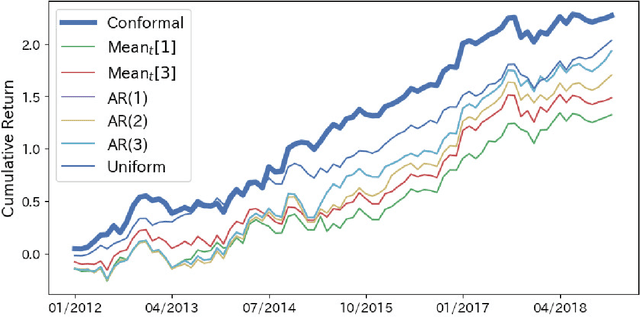

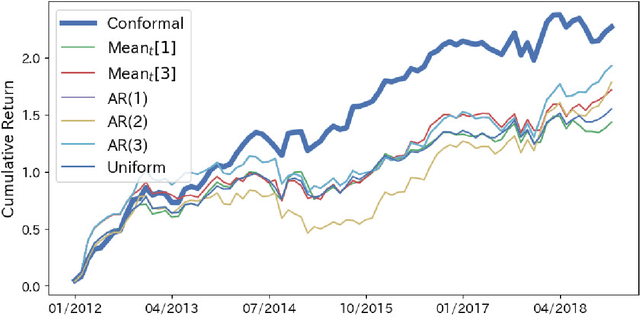
Abstract:This study explores portfolio selection using predictive models for portfolio returns. Portfolio selection is a fundamental task in finance, and various methods have been developed to achieve this goal. For example, the mean-variance approach constructs portfolios by balancing the trade-off between the mean and variance of asset returns, while the quantile-based approach optimizes portfolios by accounting for tail risk. These traditional methods often rely on distributional information estimated from historical data. However, a key concern is the uncertainty of future portfolio returns, which may not be fully captured by simple reliance on historical data, such as using the sample average. To address this, we propose a framework for predictive portfolio selection using conformal inference, called Conformal Predictive Portfolio Selection (CPPS). Our approach predicts future portfolio returns, computes corresponding prediction intervals, and selects the desirable portfolio based on these intervals. The framework is flexible and can accommodate a variety of predictive models, including autoregressive (AR) models, random forests, and neural networks. We demonstrate the effectiveness of our CPPS framework using an AR model and validate its performance through empirical studies, showing that it provides superior returns compared to simpler strategies.
Adaptive Generalized Neyman Allocation: Local Asymptotic Minimax Optimal Best Arm Identification
May 29, 2024
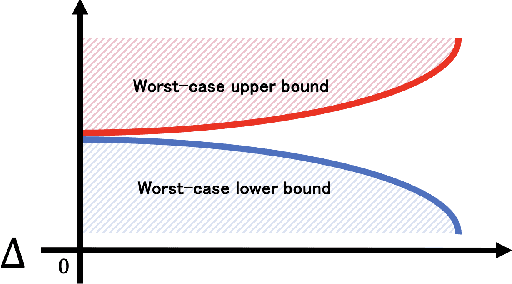
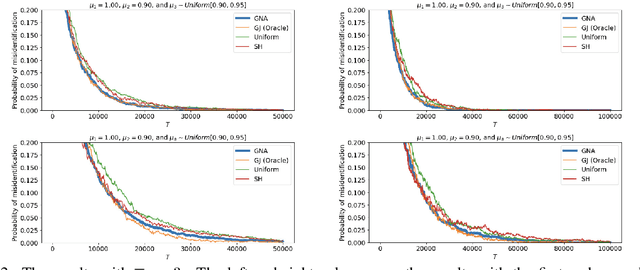
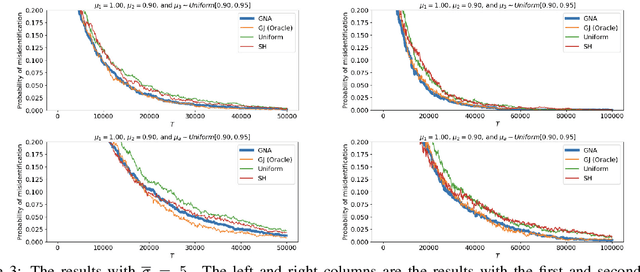
Abstract:This study investigates a local asymptotic minimax optimal strategy for fixed-budget best arm identification (BAI). We propose the Adaptive Generalized Neyman Allocation (AGNA) strategy and show that its worst-case upper bound of the probability of misidentifying the best arm aligns with the worst-case lower bound under the small-gap regime, where the gap between the expected outcomes of the best and suboptimal arms is small. Our strategy corresponds to a generalization of the Neyman allocation for two-armed bandits (Neyman, 1934; Kaufmann et al., 2016) and a refinement of existing strategies such as the ones proposed by Glynn & Juneja (2004) and Shin et al. (2018). Compared to Komiyama et al. (2022), which proposes a minimax rate-optimal strategy, our proposed strategy has a tighter upper bound that exactly matches the lower bound, including the constant terms, by restricting the class of distributions to the class of small-gap distributions. Our result contributes to the longstanding open issue about the existence of asymptotically optimal strategies in fixed-budget BAI, by presenting the local asymptotic minimax optimal strategy.
 Add to Chrome
Add to Chrome Add to Firefox
Add to Firefox Add to Edge
Add to Edge